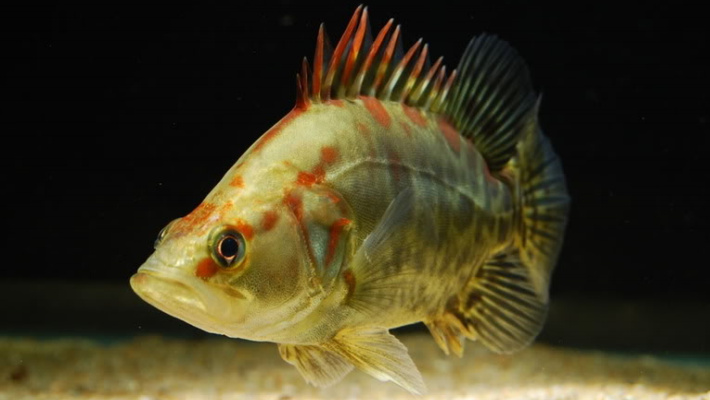|
Freshwater
molluscs, snails (Gastropoda) and mussels (Bivalvia), are an excellent food for
many species of freshwater fish and crustaceans. In rivers, lakes and
reservoirs, molluscs form powerful bottom placers and foulings that are
actively exploited by many cyprinid and other fish.
For
example, it is shown that bream, Abramis
brama, white bream,
Blicca bjoerkna, common roach, Rutilus rutilus, and carp, Cyprinus
carpio, can eat zebra mussel, Dreissena
polymorpha, of size ranged from 1-2 to 45 mm depending on fish age (Prejs et al., 1990; Nagelkerke
& Sibbing, 1996; Tucker et al., 1996). The real switch to zebra mussels would
be expected in fish of 23–24 cm length (Prejs et al., 1990). Other abundant
freshwater molluscs are Viviparus
viviparus, V. ater, V. contectus and
other viviparous snails. For example, newborn V. ater are eaten by barbel,
Barbus barbus, roach, R. rutilus, rudd, Scardinius erythrophtalmus and tench,
Tinca tinca (Keller & Ribi, 1993),
while adult viviparids (with the relatively hard shell and shell size up to 45
mm) are eaten by all large cyprinid fish with the well developed pharyngeal teeth.
Composition
The
proximate compositions and fatty acid profiles of the freshwater mussels Unio terminalis and Potamida littoralis are compared by
Ersoy & Şereflişan (2010). The crude protein (11,87-11,97 %), lipid
(2,55-1,05 %), ash (1,68–1,61%) and moisture (80,36-81,69 %) contents of U.
terminalis and P. littoralis are
observed. Lipid content in U. terminalis
is found to be significantly higher than in P. littoralis. The percentages of total
saturated fatty acids and total monounsaturated fatty acids are higher in U. terminalis
than in P. littoralis. At the same
time, the corresponding content of total polyunsaturated fatty acids is lower. The
n3-n6 ratio are 1,54-1,40 in U. terminalis and P.
littoralis, respectively. Using these data, Ersoy
& Şereflişan (2010) conclude that freshwater
mussels U. terminalis and P. littoralis are suitable as the healthy food.
Freshwater and Saltwater Molluscs
There are
strong differences in amino acids and other substances content between molluscs
of freshwater and saltwater origin. Firstly, amino acids in general are found in the higher
concentrations in marine species than in the freshwater forms (Allen, 1961). The
second feature is associated with taurine. This acid is
absent in terrestrial and freahwater molluscs, such as gastropods, Lymnaea palustris, Marisa cornuarietis, Pomacea bridgesi, and pelecypods, Anadonta grandis, Quadrula quadrula, Lampsilis sp.,
Eiliptio sp., but is present in large
amounts in marine species (Allen, 1961; Carr et al., 1996). Taurine is
considered as an osmoregulator (achieving in such marine mussel as Mytilus edulis 1,6 % of the dry weight) and feeding
stimulant. The third feature
is associated with betaine that is abundant in marine molluscs,
abscent in freshwater ones and play similar roles.
In
general, taurine,betaine, glycine and alanine are the most abundant substances (and
feeding stimulants) in tissues of marine pelecypods (Carr et al., 1996).
Seasonal Variations
The effect
of autumn and winter decrease in environmental temperature on the content of
free amino acids in body fluids has been studied in freshwater snail Lymnaea stagnalis (Karanova, 2006). In
autumn, when temperature drops to 4 and 0°C, the highest increase in alanine
concentration is observed, its pool is almost three times that in summer. Less
pronounced accumulation of glutamate, glycine, histidine and serine is observed
in the same temperature range. Cysteine is detected at 0°C. The accumulation of
essential amino acids methionine, leucine, isoleucine, tyrosine and
phenylalanine takes place at 0°C. Only traces of these amino acids are
detectable at 4°C. At the same time, free lysine undetectable in summer has
been revealed in autumn, its concentration increases as temperature decreases
to 0°C. During winter, when snails are hypermetabolic for 2.5 months, pools of
all amino acids decrease 4-8 times, while essential amino acids, except lysine,
are undetectable. The involvement of alanine and, possibly, lysine in the L. stagnalis adaptation to near-zero
temperature is proposed (Karanova, 2006).
Attractiveness
Three
species of crayfish (Orconectes virilis,
O. rusticus and Cambarus robustus) are tested for feeding responses
to odors of potential food molluscs (invasive zebra mussel, Dreissena polymorpha, and native
gastropods, Stegnicola elodes and Aplexa elongata) by Hazlett (1994). Feeding
responses to odors are shown only by individuals experienced with feeding on
the corresponding prey. Like hermit crabs, such as Clibanarius vittatus
and other species feeding on marine gastropods or use their shells (e.g., Rittschof,
1980), freshwater O. virilis respond
to peptides produced during enzymatic degradation of proteins in gastropod
flesh (Hazlett, 1994).
According
to data obtained by Carr et al. (1977) for pigfish, Orthopristis chrysopterus, synthetic mixtures of betaine and amino
acids could account for most of the stimulatory capacity of extracts of oyster,
Crassostrea virginica (Mollusca). Flatfish
Dover sole, Solea solea, eat the diet
flavoured with the mussel, Mytilus edulis,
extract or with mixtures of pure chemicals (glycine betaine plus amino acids)
matched with the composition of mussel flesh (Mackie et al., 1980).
Basic References
Allen K.
1961. Amino acids in the mollusca. American Zoologist 1, 253-261
Carr W.E.S.,
Blumenthal K.M., Netherton III J.C. 1977. Chemoreception in the pigfish, Orthopristis chrysopterus: The
contribution of amino acids and betaine to stimulation of feeding behavior by
various extracts. Comparative
Biochemistry and Physiology Part A: Physiology 58, 69-73
Carr W.E.S., Netherton III J.C., Gleeson R.A., Derby C.D. 1996.
Stimulants of feeding behavior in fish: analyses of tissues of diverse marine
organisms. The Biological Bulletin
190, 149-160
Ersoy
B., Şereflişan H. 2010. The proximate composition and fatty acid profiles of
edible parts of two freshwater mussels. Turkish Journal of Fisheries and Aquatic
Sciences 10,
71-74
Hazlett
B.A. 1994. Crayfish feeding responses to zebra mussels depend on microorganisms
and learning. Journal of Chemical Ecology
20, 2623-2630
Karanova M.
2006. Variation in the
content of free amino acids in body fluids of freshwater mollusk Lymnaea stagnalis during seasonal adaptation
to low positive temperatures. Biology
Bulletin of the Russian
Academy of Sciences 33, 587-591
Keller G.,
Ribi G. 1993. Fish predation and offspring survival in the prosobranch snail Viviparus ater. Oecologia 93, 493-500
Mackie A.M.,
Adron J.W., Grant P.T. 1980. Chemical
nature of feeding stimulants for the juvenile Dover sole, Solea solea (L.). Journal
of Fish Biology 16,
701-708
Nagelkerke
L.A.J., Sibbing F.A. 1996. Efficiency of feeding on zebra mussel (Dreissena polymorpha) by common bream (Abramis brama), white bream (Blicca
bjoerkna), and roach (Rutilus rutilus):
the effects of morphology and behavior. Canadian Journal of Fisheries and Aquatic
Sciences 53, 2847-2861
Prejs A, Lewandowski K., Stańczykowska-Piotrowska A. 1990.
Size-selective predation by roach (Rutilus
rutilus) on zebra mussel (Dreissena
polymorpha): field stuides. Oecologia
83, 378-384
Rittschof D. 1980. Chemical attraction of hermit crabs and other
attendants to simulated gastropod predation sites. Journal of Chemical Ecology 6, 103-118
Tucker
J.K., Cronin F.A., Soergel D.W., Theiling C.H. 1996. Predation on zebra mussels (Dreissena polymorpha) by common carp (Cyprinus carpio). Journal of Freshwater Ecology 11, 363-372
|








 SUBSCRIBE
SUBSCRIBE


